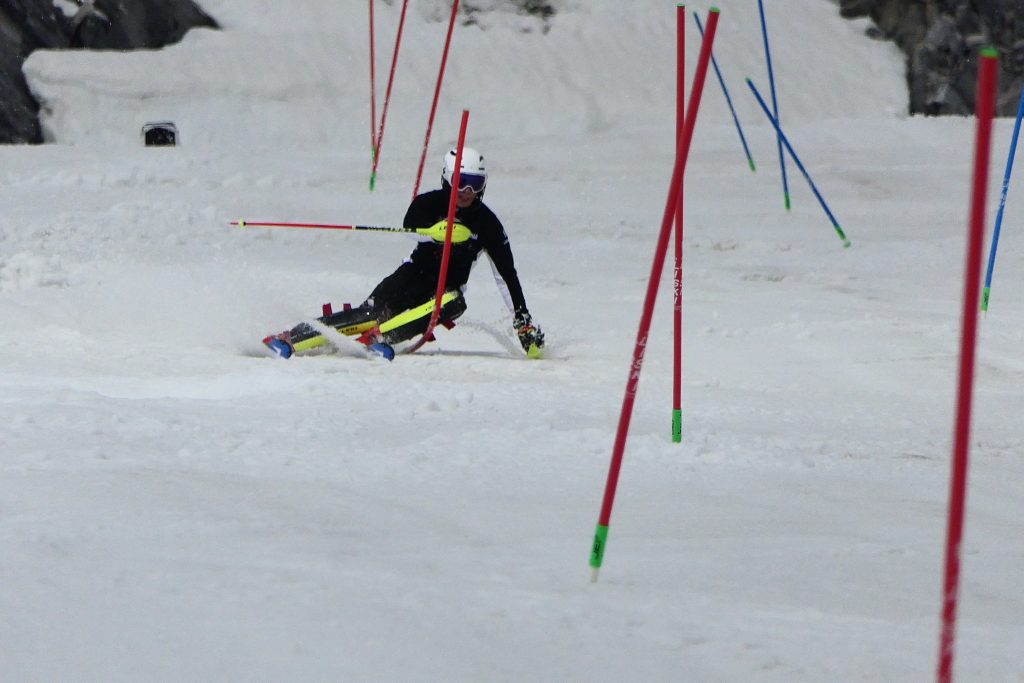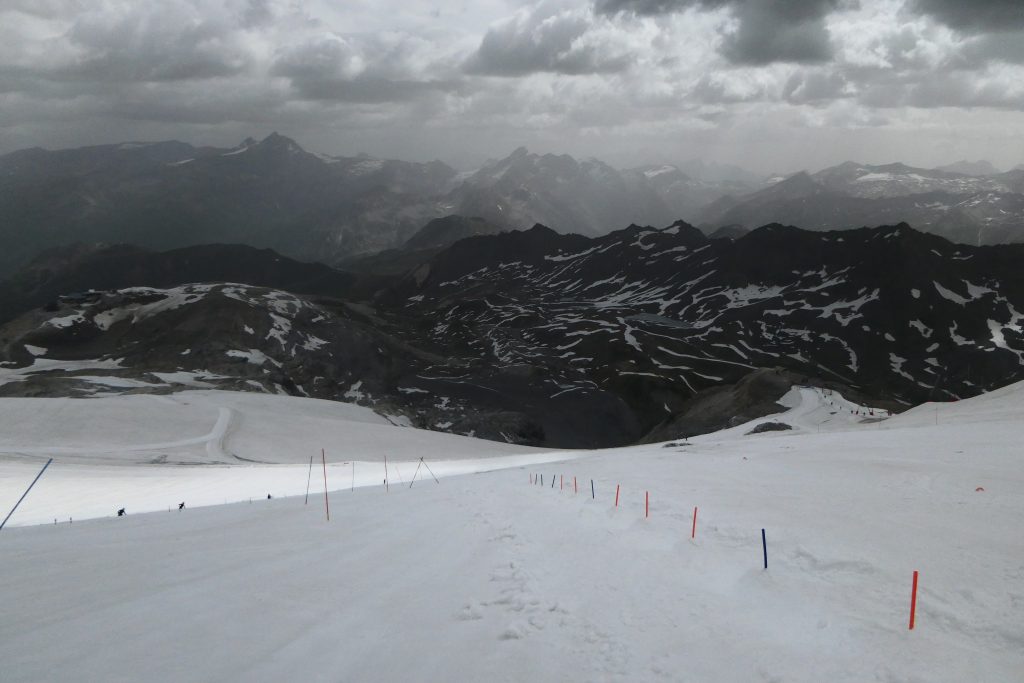Yesterday was a day battling with the heat but hopefully a better understanding will emerge from that experience – regarding the many other dimensions of skiing that need to be developed outside of the gates – or even in the gates when things are not ideal.
There are four runs recorded:
Run 1 – just trying to stay forward and get used to the gates again.
Run 2 – extending through the start of the turn and tilting the upper body more from the hips.
Run 3 – better – more range of movement – but a pole pinged out and Alex skied over it – causing a fall.
Run 4 – Snow getting soft now
We’re taking it easy and progressive to make sure there are no recurring shin problems.
Looking at technique outside of the gates we focused on the mechanics of Joubert’s “Surf Technique”. Although this concept is old – like culture or science, skiing today is built on the “shoulders of giants” so the more you are aware of the origins the better you can understand the present. The Surf Turn still lives on in World Cup skiing in the form of the modern “Stivot”.

The above diagram shows the main organisation of the bone structure (top centre diagram) – the goal being primarily to keep the skis flat and not “edged” in certain parts of the turns. Without going into any detail here the relevant aspect for Alex currently is that in soft snow this can lead to carrying more speed and in bumps it leads to better absorption. The issue we need to overcome first of all is that the coordination is so alien to Alex that he can’t currently get his limbs to go there even when stationary.
(Ignore the fact that carving skis didn’t exist when this was written, the spine is twisted in the wrong direction for optimal performance and safety and the author uses “balance” from engineering instead of from physics – so just look at the top centre diagram.)

We will be looking more carefully at how to stabilise and protect the knees with strengthening the hamstrings – and how extension at the hip joint provides power – especially when the upper body is tilted forward.


